In July 2007, in Lisbon new Seven Wonders of the World were announced, among which the ancient city of Machu Picchu was included. Let’s take a look at the other new wonders of the world.
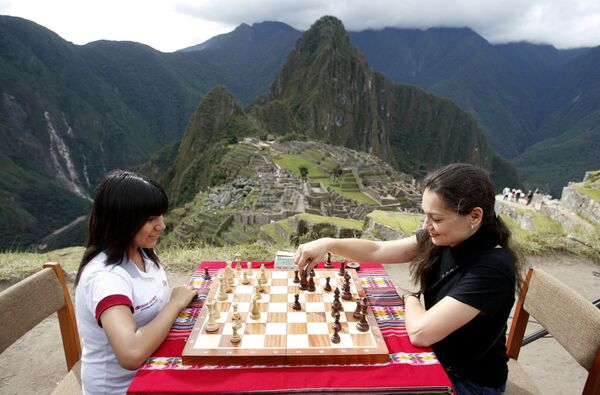
1/8
© AP Photo / Karel Navarro
Machu Picchu: The mysterious Inca city hidden high in the Andes was accidentally discovered in the early twentieth century by scientist and adventurer Hiram Bingham but its history is like the story of the legendary El Dorado.
Above: Russian world chess champion Alexandra Kosteniuk and Peruvian world chess champion Cory Daisy playing Inca chess at the citadel of Machu Picchu in Cusco, Peru.
Above: Russian world chess champion Alexandra Kosteniuk and Peruvian world chess champion Cory Daisy playing Inca chess at the citadel of Machu Picchu in Cusco, Peru.
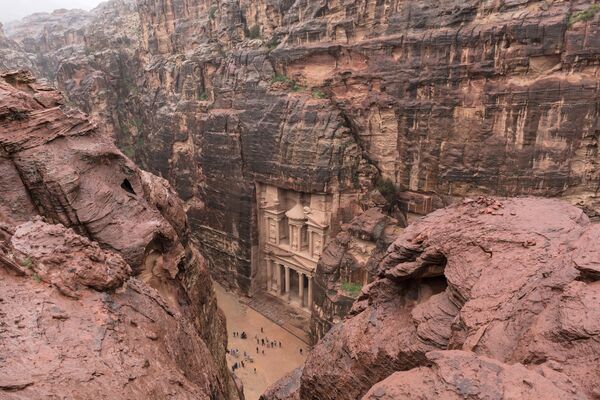
Petra in Jordan: The ancient city of Petra rises 900 meters above sea level. It is a famous archaeological site in Jordan's southwestern desert. Dating to around 300 BC, it was the capital of the Nabatean Kingdom.
Petra contains tombs and temples carved into pink sandstone cliffs, earning its nickname, the Rose City.
Above: View from the heights of the facade of the temple city of Petra, Jordan.
Petra contains tombs and temples carved into pink sandstone cliffs, earning its nickname, the Rose City.
Above: View from the heights of the facade of the temple city of Petra, Jordan.

Colosseum in Rome: The colosseum is an oval amphitheater in the center of Rome, Italy. It is the largest amphitheater ever built. Construction began under Emperor Vespasian in AD 72 and was completed in AD 80 under his successor and heir, Titus.
It is estimated that it could hold between 50,000 and 80,000 spectators. It was used for gladiatorial contests and public spectacles such as animal hunts, executions, re-enactments of famous battles, and dramas based on Classical mythology.
Above: Women belonging to historical groups dressed as ancient Romans parade in front of the colosseum to mark the anniversary of the legendary foundation in 753 BC of the eternal city in Rome on April 21, 2014.
It is estimated that it could hold between 50,000 and 80,000 spectators. It was used for gladiatorial contests and public spectacles such as animal hunts, executions, re-enactments of famous battles, and dramas based on Classical mythology.
Above: Women belonging to historical groups dressed as ancient Romans parade in front of the colosseum to mark the anniversary of the legendary foundation in 753 BC of the eternal city in Rome on April 21, 2014.
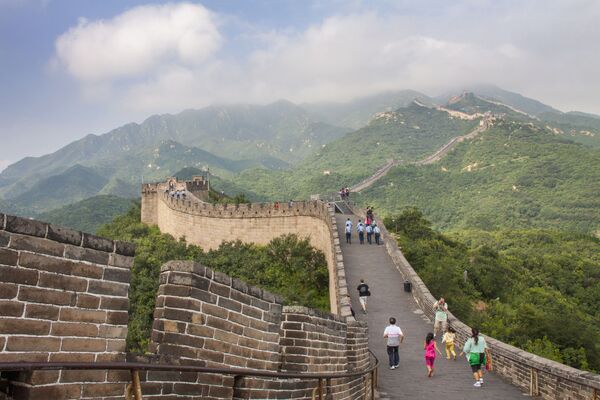
Great Wall of China: The Great Wall of China is a series of fortifications made of stone, brick, tamped earth and wood, generally built along an east-to-west line across the historical northern borders of China to protect the Chinese states and empires against the attacks and invasions of the various nomadic groups of the Eurasian steppe.
Above: Great Wall of China - view from wall.
Above: Great Wall of China - view from wall.
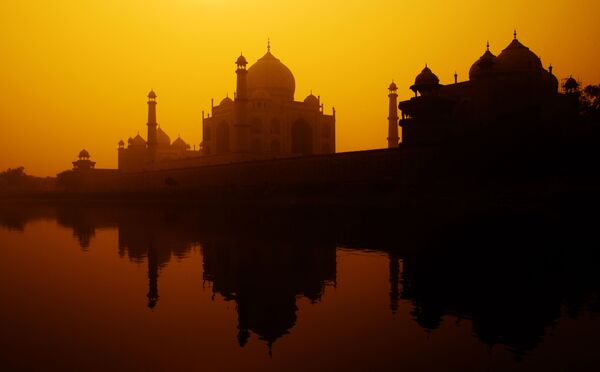
Taj Mahal of India: The Taj Mahal is an ivory-white marble mausoleum on the south bank of the Yamuna River in the Indian city of Agra.
It was commissioned in 1632 by the Mughal emperor, Shah Jahan, to house the tomb of his favorite wife, Mumtaz Mahal. The grand construction project employed some 20,000 artisans under the guidance of top architects.
Above: Sunset silhouette of a grand Taj Mahal
It was commissioned in 1632 by the Mughal emperor, Shah Jahan, to house the tomb of his favorite wife, Mumtaz Mahal. The grand construction project employed some 20,000 artisans under the guidance of top architects.
Above: Sunset silhouette of a grand Taj Mahal
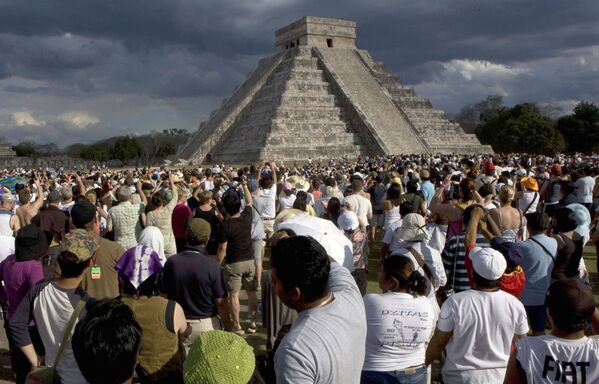
6/8
© AP Photo / Israel Leal
Chichen Itza, Mexico: It was a large pre-Columbian city built by the Maya people of the Terminal Classic period. The archaeological site is located in Tinúm Municipality, Yucatán State, Mexico. It was one of the largest Maya cities and it was likely to have been one of the mythical great cities, or Tollans, referred to in later Mesoamerican literature.
Above: People attend the spring equinox in front of the Kukulkan Pyramid in Chichen Itza, Mexico.
Above: People attend the spring equinox in front of the Kukulkan Pyramid in Chichen Itza, Mexico.
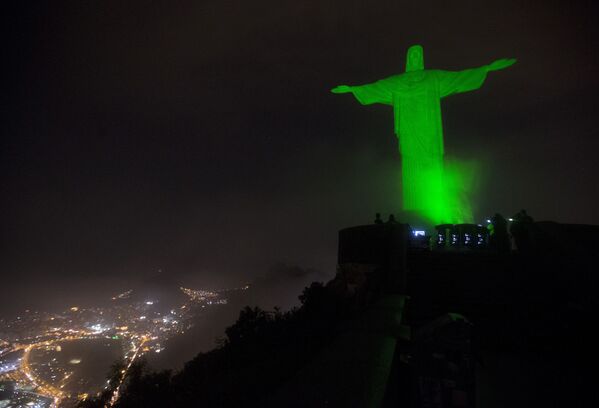
7/8
© AP Photo / Silvia Izquierdo
Christ the Redeemer statue in Brazil: Christ the Redeemer is an Art Deco statue of Jesus Christ in Rio de Janeiro, Brazil, created by Polish-French sculptor Paul Landowski.
The statue is 30 meters (98 ft.) tall, not including its 8-metre (26 ft.) pedestal, and its arms stretch 28 meters (92 ft.) wide. A symbol of Christianity across the world, the statue has also become a cultural icon of both Rio de Janeiro and Brazil.
Above: Christ the Redeemer statue is lit up in green as a symbolic warning of the dangers of climate change, in Rio de Janeiro, Brazil.
The statue is 30 meters (98 ft.) tall, not including its 8-metre (26 ft.) pedestal, and its arms stretch 28 meters (92 ft.) wide. A symbol of Christianity across the world, the statue has also become a cultural icon of both Rio de Janeiro and Brazil.
Above: Christ the Redeemer statue is lit up in green as a symbolic warning of the dangers of climate change, in Rio de Janeiro, Brazil.
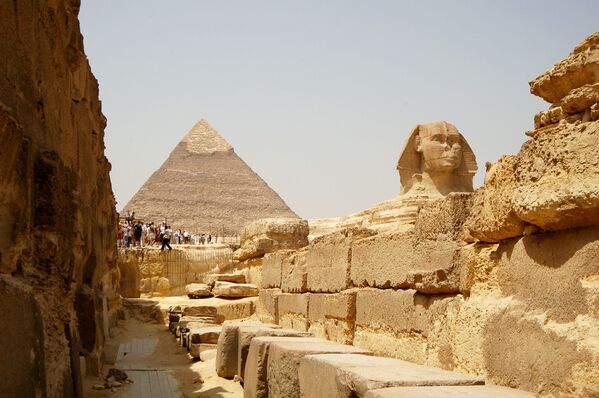
The Great Pyramids of Giza: The Great Pyramid of Giza is the oldest and largest of the three pyramids in the Giza pyramid complex bordering what is now El Giza, Egypt. It is the oldest of the Seven Wonders of the Ancient World, and the only one to remain largely intact.
Above: Grand pyramid of Giza and the Sphinx.
Above: Grand pyramid of Giza and the Sphinx.

